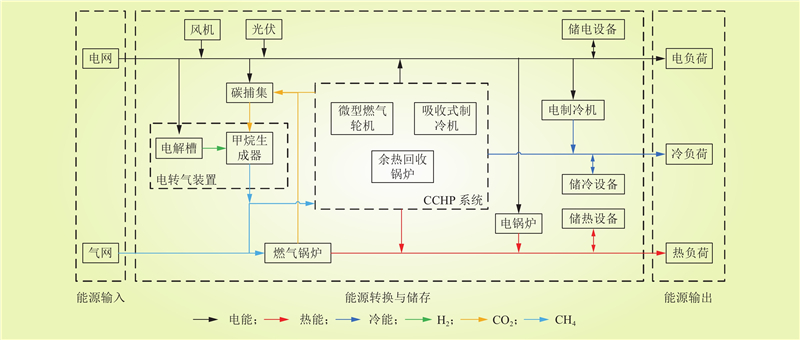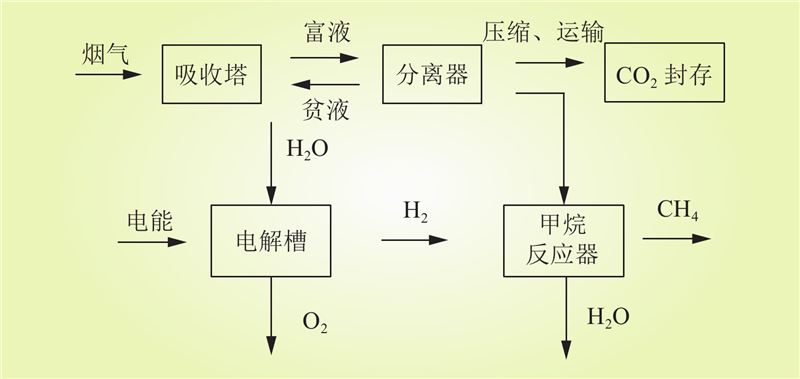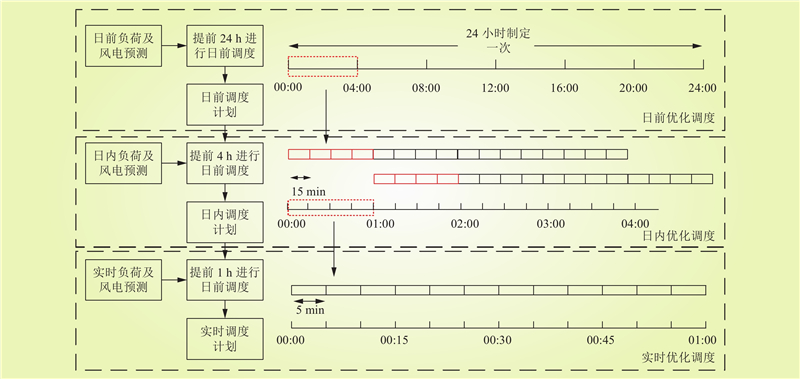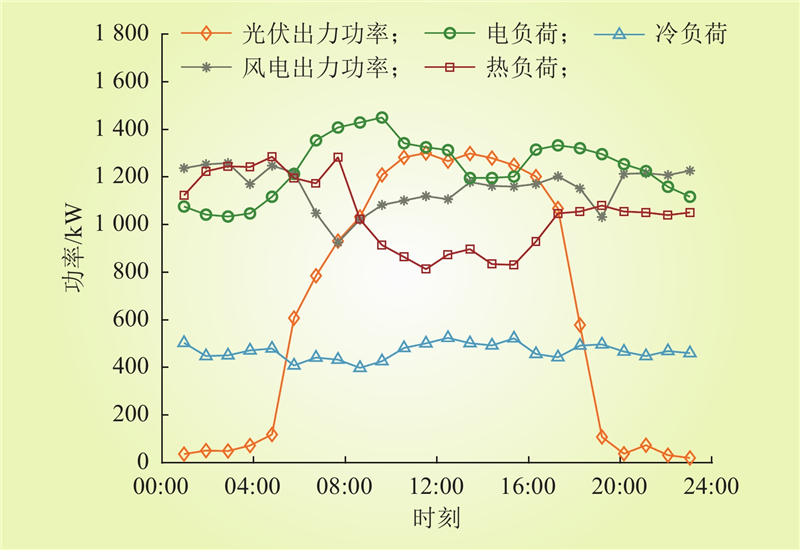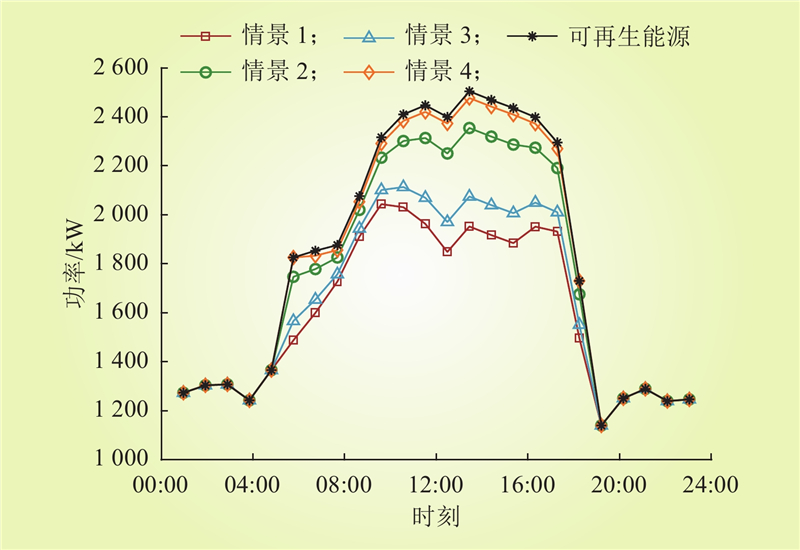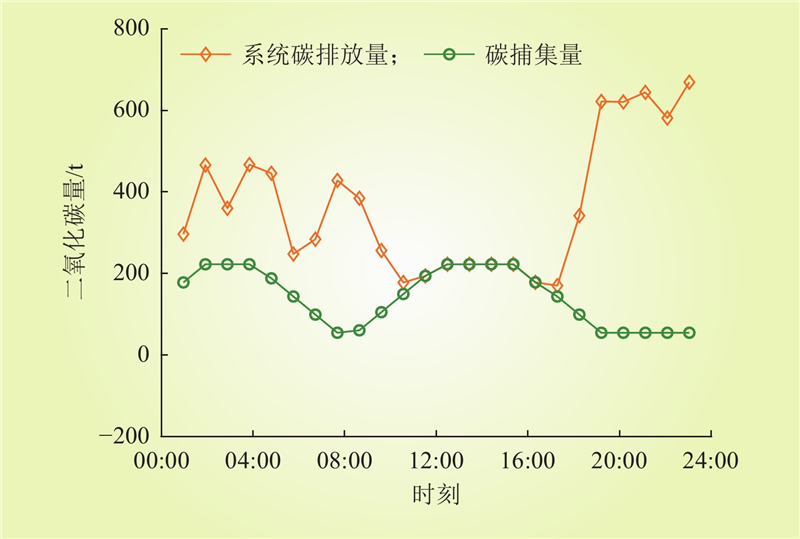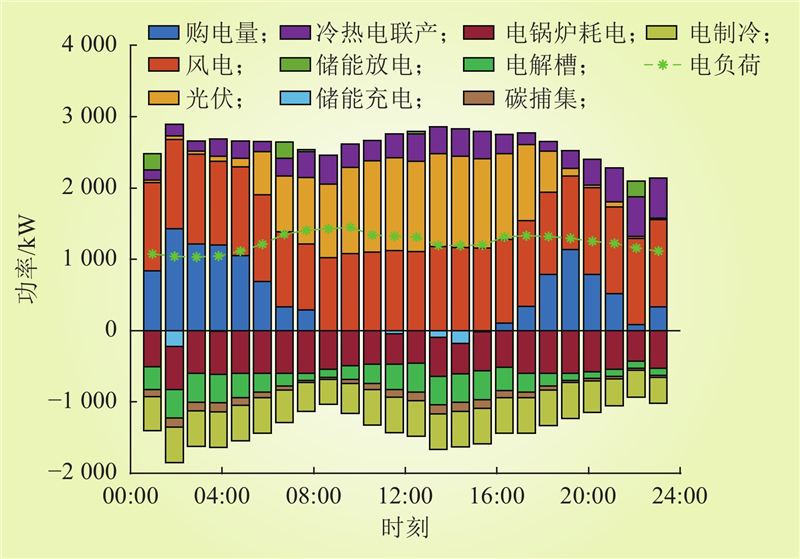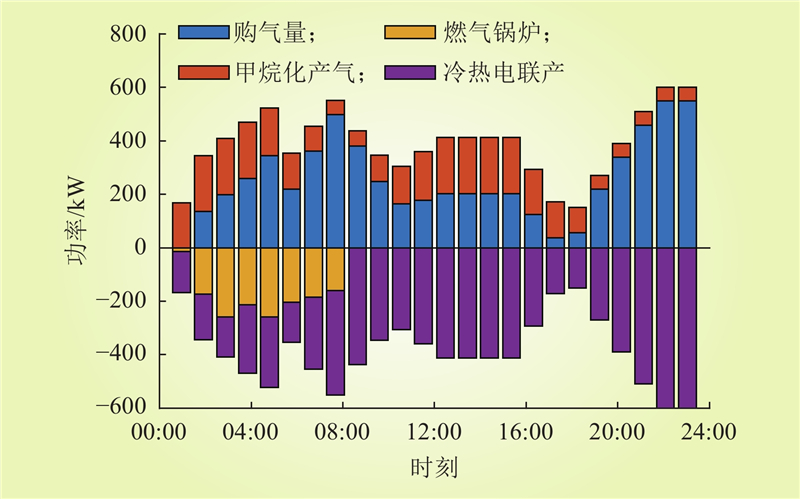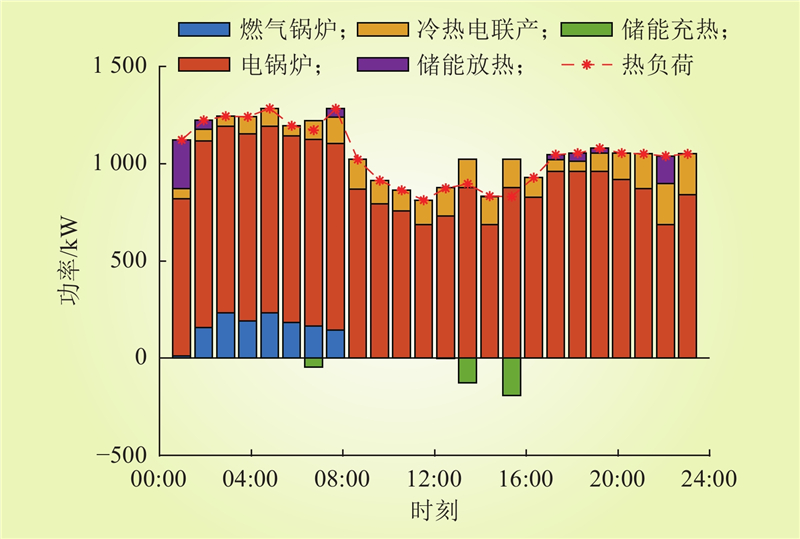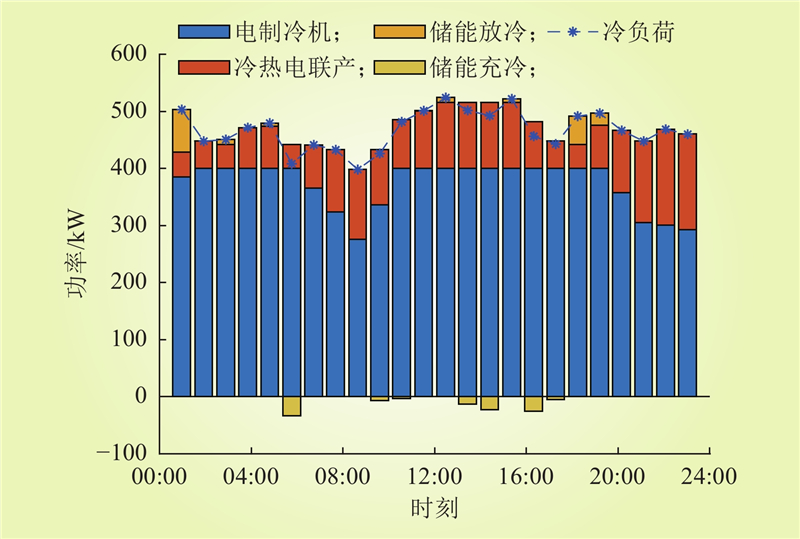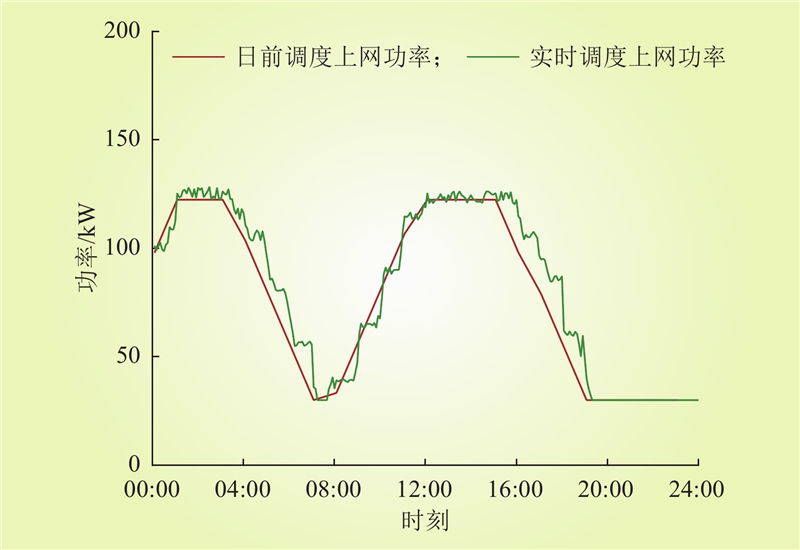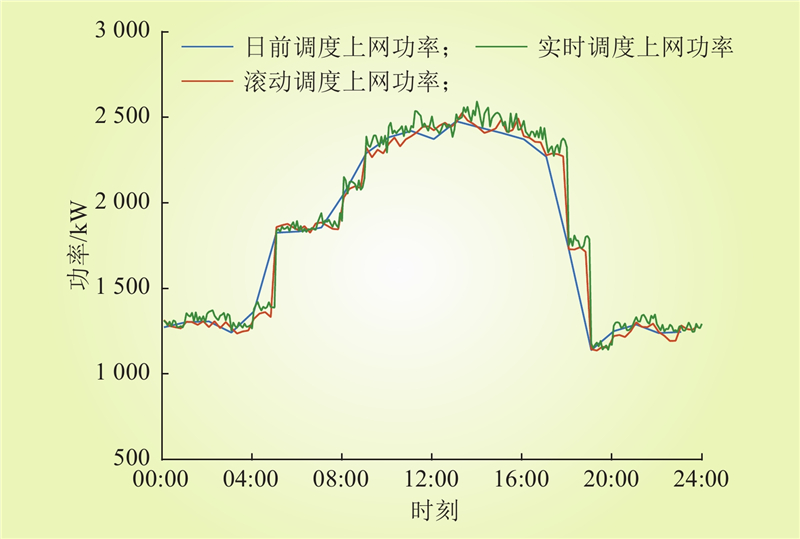| 1 |
丘登荣. 新时代绿色低碳循环经济发展体系建设路径[J]. 佳木斯大学社会科学学报, 2023, 41 (3): 17- 19, 23.
DOI
|
| 2 |
赵昕, 刘知凡, 厉艳, 等. 基于“双碳” 目标下的综合能源规划体系研究[J]. 能源与环保, 2023, 45 (9): 175- 178, 186.
|
|
ZHAO Xin, LIU Zhifan, LI Yan, et al. Research on integrated energy planning system based on "dual carbon" target[J]. China Energy and Environmental Protection, 2023, 45 (9): 175- 178, 186.
|
| 3 |
张运洲, 代红才, 吴潇雨, 等. 中国综合能源服务发展趋势与关键问题[J]. 中国电力, 2021, 54 (2): 1- 10.
|
|
ZHANG Yunzhou, DAI Hongcai, WU Xiaoyu, et al. Development trends and key issues of China's integrated energy services[J]. Electric Power, 2021, 54 (2): 1- 10.
|
| 4 |
贾宏杰, 王丹, 徐宪东, 等. 区域综合能源系统若干问题研究[J]. 电力系统自动化, 2015, 39 (7): 198- 207.
DOI
|
|
JIA Hongjie, WANG Dan, XU Xiandong, et al. Research on some key problems related to integrated energy systems[J]. Automation of Electric Power Systems, 2015, 39 (7): 198- 207.
DOI
|
| 5 |
LIU W J, WEN F S, XUE Y S. Power-to-gas technology in energy systems: current status and prospects of potential operation strategies[J]. Journal of Modern Power Systems and Clean Energy, 2017, 5 (3): 439- 450.
|
| 6 |
程耀华, 杜尔顺, 田旭, 等. 电力系统中的碳捕集电厂: 研究综述及发展新动向[J]. 全球能源互联网, 2020, 3 (4): 339- 350.
|
|
CHENG Yaohua, DU Ershun, TIAN Xu, et al. Carbon capture power plants in power systems: review and latest research trends[J]. Journal of Global Energy Interconnection, 2020, 3 (4): 339- 350.
|
| 7 |
张力为, 甘满光, 王燕, 等. 二氧化碳捕集利用-可再生能源发电调峰耦合技术[J]. 热力发电, 2021, 50 (1): 24- 32.
|
|
ZHANG Liwei, GAN Manguang, WANG Yan, et al. Coupled technology of carbon dioxide capture and utilization and renewable power peak shaving[J]. Thermal Power Generation, 2021, 50 (1): 24- 32.
|
| 8 |
崔杨, 闫石, 仲悟之, 等. 含电转气的区域综合能源系统热电优化调度[J]. 电网技术, 2020, 44 (11): 4254- 4264.
|
|
CUI Yang, YAN Shi, ZHONG Wuzhi, et al. Optimal thermoelectric dispatching of regional integrated energy system with power-to-gas[J]. Power System Technology, 2020, 44 (11): 4254- 4264.
|
| 9 |
付兆隆, 薛田良, 张磊, 等. 考虑电转气高效用氢的综合能源系统低碳运行[J]. 计算机仿真: 1–8.
|
|
FU Zhaolong, XUE Tianliang, ZHANG Lei, et al. Low-carbon operation of integrated energy system considering power-to-gas high-efficiency hydrogen utilization[J]. Computer Simulation: 1–8.
|
| 10 |
李欣, 刘立, 黄婧琪, 等. 含耦合P2G和CCS的园区级综合能源系统优化调度[J]. 电力系统及其自动化学报, 2023, 35 (4): 18- 25.
|
|
LI Xin, LIU Li, HUANG Jingqi, et al. Optimal scheduling of park-level integrated energy system with coupling of P2G and CCS[J]. Proceedings of the CSU-EPSA, 2023, 35 (4): 18- 25.
|
| 11 |
李江南, 程韧俐, 刘稼瑾, 等. 含碳捕集及电转氢设备的低碳园区综合能源系统随机优化调度[J/OL]. 中国电力, 2024: 1–8. (2024-01-05).https://kns.cnki.net/kcms/detail/11.3265.TM.20240104.1450.004.html.
|
|
LI Jiangnan, CHENG Renli, LIU Jiajin, et al. Stochastic optimal of integrated energy system in low-carbon parks considering carbon capture storage and power to hydrogen[J/OL]. Electric Power, 2024: 1–8. (2024-01-05).https://kns.cnki.net/kcms/detail/11.3265.TM.20240104.1450.004.html.
|
| 12 |
崔杨, 曾鹏, 王铮, 等. 计及电价型需求侧响应含碳捕集设备的电–气–热综合能源系统低碳经济调度[J]. 电网技术, 2021, 45 (2): 447- 461.
|
|
CUI Yang, ZENG Peng, WANG Zheng, et al. Low-carbon economic dispatch of electricity-gas-heat integrated energy system with carbon capture equipment considering price-based demand response[J]. Power System Technology, 2021, 45 (2): 447- 461.
|
| 13 |
XUE X Z, AI X M, FANG J K, et al. Real-time schedule of integrated heat and power system: a multi-dimensional stochastic approximate dynamic programming approach[J]. International Journal of Electrical Power & Energy Systems, 2022, 134: 107427.
|
| 14 |
YANG H Z, LI M L, JIANG Z Y, et al. Multi-time scale optimal scheduling of regional integrated energy systems considering integrated demand response[J]. IEEE Access, 2020, 8: 5080–5090.
|
| 15 |
SONG H, GU M C, LIU C, et al. Multi-objective battery energy storage optimization for virtual power plant applications[J]. Applied Energy, 2023, 352: 121860.
|
| 16 |
CHENG S, WANG R, XU J Y, et al. Multi-time scale coordinated optimization of an energy hub in the integrated energy system with multi-type energy storage systems[J]. Sustainable Energy Technologies and Assessments, 2021, 47, 101327.
DOI
|
| 17 |
王智, 陶鸿俊, 蔡文奎, 等. 多时间尺度滚动优化在冷热电联供系统中的优化调度研究[J]. 太阳能学报, 2023, 44 (2): 298- 308.
|
|
WANG Zhi, TAO Hongjun, CAI Wenkui, et al. Optimal scheduling research of multi-time-scale rolling optimization in CCHP system[J]. Acta Energiae Solaris Sinica, 2023, 44 (2): 298- 308.
|
| 18 |
何畅, 程杉, 徐建宇, 等. 基于多时间尺度和多源储能的综合能源系统能量协调优化调度[J]. 电力系统及其自动化学报, 2020, 32 (2): 77- 84, 97.
|
|
HE Chang, CHENG Shan, XU Jianyu, et al. Coordinated optimal scheduling of integrated energy system considering multi-time scale and hybrid energy storage system[J]. Proceedings of the CSU-EPSA, 2020, 32 (2): 77- 84, 97.
|
| 19 |
孙强, 谢典, 聂青云, 等. 含电-热-冷-气负荷的园区综合能源系统经济优化调度研究[J]. 中国电力, 2020, 53 (4): 79- 88.
|
|
SUN Qiang, XIE Dian, NIE Qingyun, et al. Research on economic optimization scheduling of park integrated energy system with electricity-heat-cool-gas load[J]. Electric Power, 2020, 53 (4): 79- 88.
|
| 20 |
戴毅茹, 王坚, 曾依浦. 考虑风光气电协同供能的冷热电联供系统多目标优化[J]. 同济大学学报(自然科学版), 2023, 51 (6): 963- 972.
DOI
|
|
DAI Yiru, WANG Jian, ZENG Yipu. Multi-objective optimization of combined cooling heating and power system considering photovoltaic-wind-gas-power collaborative energy supply[J]. Journal of Tongji University (Natural Science), 2023, 51 (6): 963- 972.
DOI
|
| 21 |
高明非, 韩中合, 赵斌, 等. 区域综合能源系统多类型储能协同优化与运行策略[J/OL]. 中国电力, 2024: 1–12. (2024-02-29).https://kns.cnki.net/kcms/detail/11.3265.TM.20240228.1857.004.html.
|
|
GAO Mingfei, HAN Zhonghe, ZHAO Bin, et al. Cooperative optimization and operational strategies for multi-type energy storage in regional integrated energy systems[J/OL]. Electric Power, 2024: 1–12. (2024-02-29).https://kns.cnki.net/kcms/detail/11.3265.TM.20240228.1857.004.html.
|
| 22 |
卫志农, 张思德, 孙国强, 等. 基于碳交易机制的电—气互联综合能源系统低碳经济运行[J]. 电力系统自动化, 2016, 40 (15): 9- 16.
DOI
|
|
WEI Zhinong, ZHANG Side, SUN Guoqiang, et al. Carbon trading based low-carbon economic operation for integrated electricity and natural gas energy system[J]. Automation of Electric Power Systems, 2016, 40 (15): 9- 16.
DOI
|
| 23 |
苏志鹏, 王莉, 梁欣怡, 等. 考虑阶梯式碳交易及综合需求响应的虚拟电厂优化调度[J]. 中国电力, 2023, 56 (12): 174- 182.
|
|
SU Zhipeng, WANG Li, LIANG Xinyi, et al. Optimal dispatch of virtual power plant considering stepped carbon trading and comprehensive demand response[J]. Electric Power, 2023, 56 (12): 174- 182.
|
| 24 |
邹宇航, 曾艾东, 郝思鹏, 等. 阶梯式碳交易机制下综合能源系统多时间尺度优化调度[J]. 电网技术, 2023, 47 (6): 2185- 2198.
|
|
ZOU Yuhang, ZENG Aidong, HAO Sipeng, et al. Multi-time-scale optimal dispatch of integrated energy systems under stepped carbon trading mechanism[J]. Power System Technology, 2023, 47 (6): 2185- 2198.
|
| 25 |
张洪涛, 周意入, 凃玲英, 等. 计及绿证-碳交易与氢能的综合能源系统多时间尺度优化调度[J]. 电力系统及其自动化学报, 2023, 35 (11): 95- 106.
|
|
ZHANG Hongtao, ZHOU Yiru, TU Lingying, et al. Multi-timescale optimal scheduling of integrated energy system with consideration of green certificate-carbon trading and hydrogen energy[J]. Proceedings of the CSU-EPSA, 2023, 35 (11): 95- 106.
|



